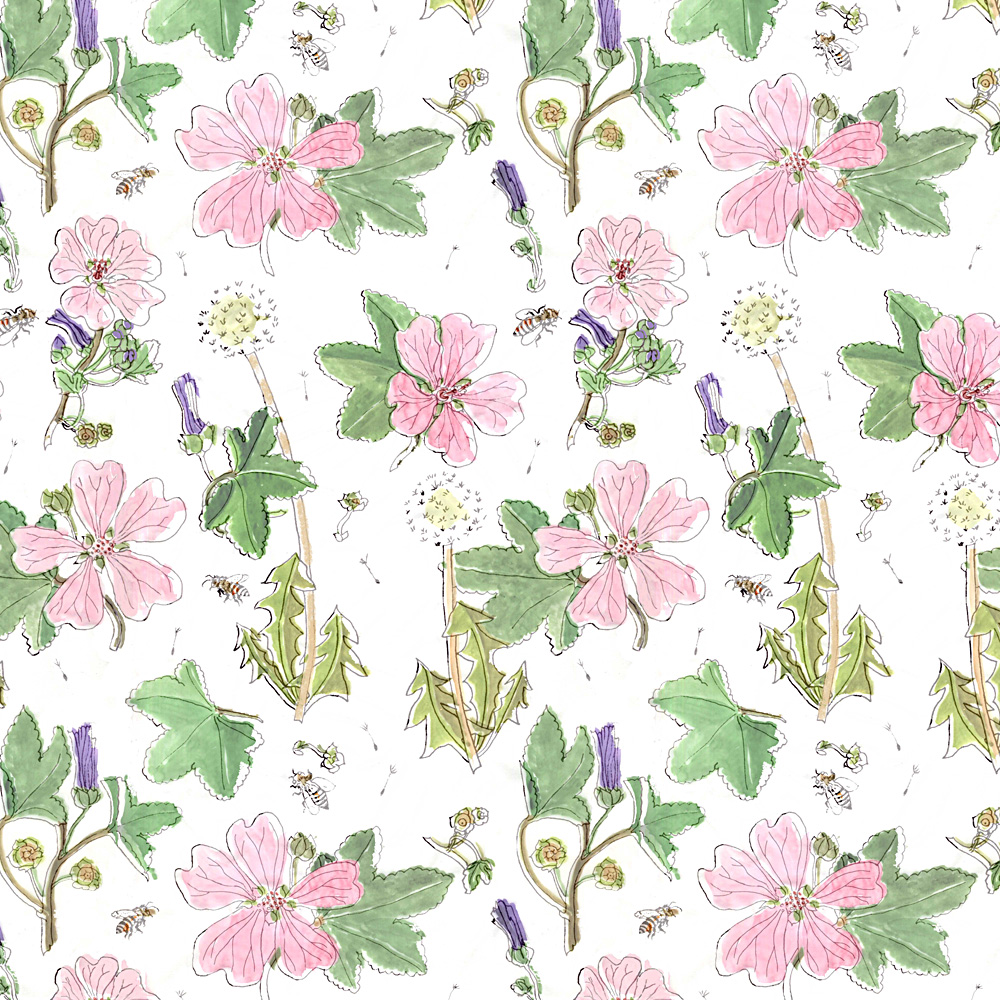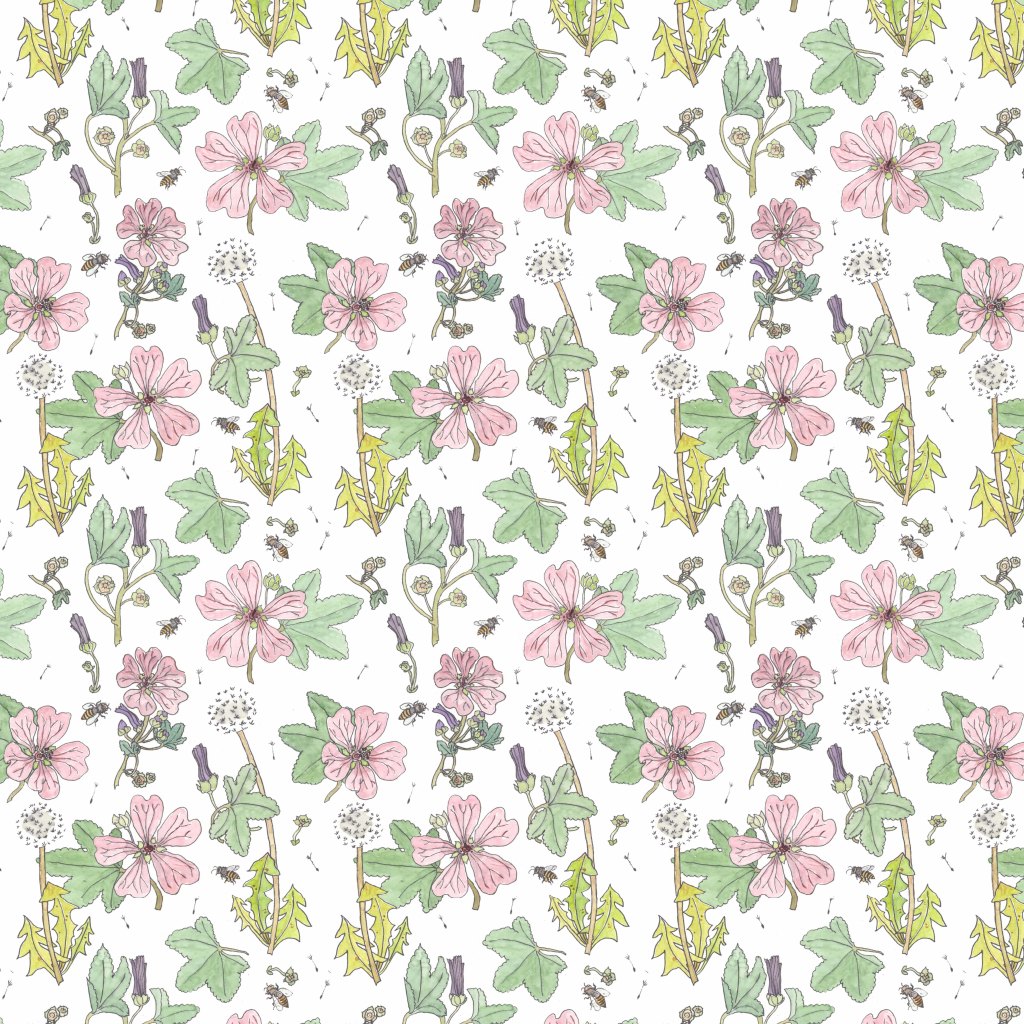Repeat Patterns
Autumn now in the garden; mallow flowers still calling the bees, and dandelion clocks lingering in the grass.
Two patterns, one off-register. This was accidentally the result of painting in watercolours a sheet of tracing paper laid over the ink outline pattern. I married the two scans together in Photoshop to create this first image. The second image is the pattern created from painting an A4 version of a print of the outline tile.
Really enjoyed this, feel I am getting somewhere now with this process. Thanks to pandemic lockdown I have had the time… As we say in New Zealand, “Kia Kaha” – Be Strong. And take care.













































